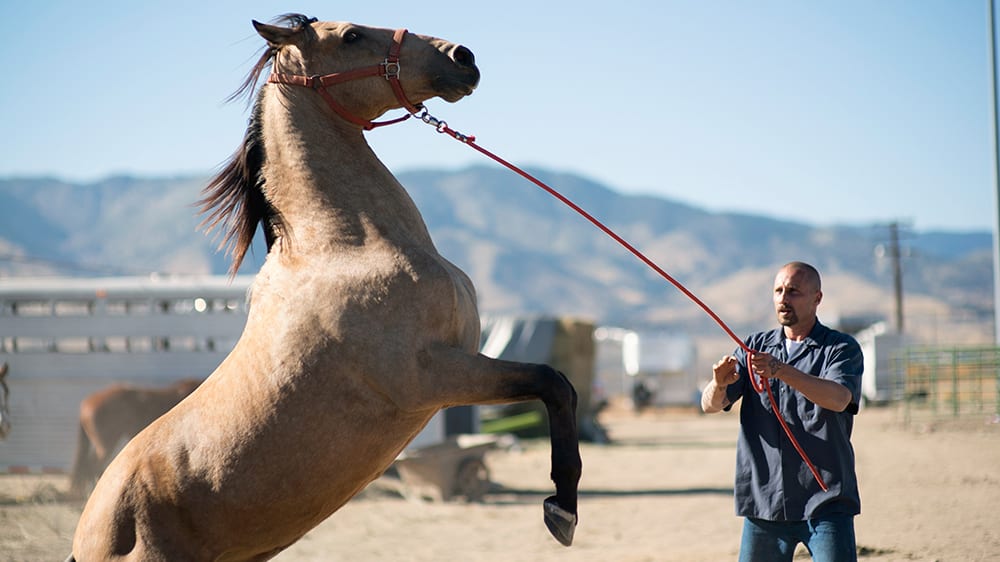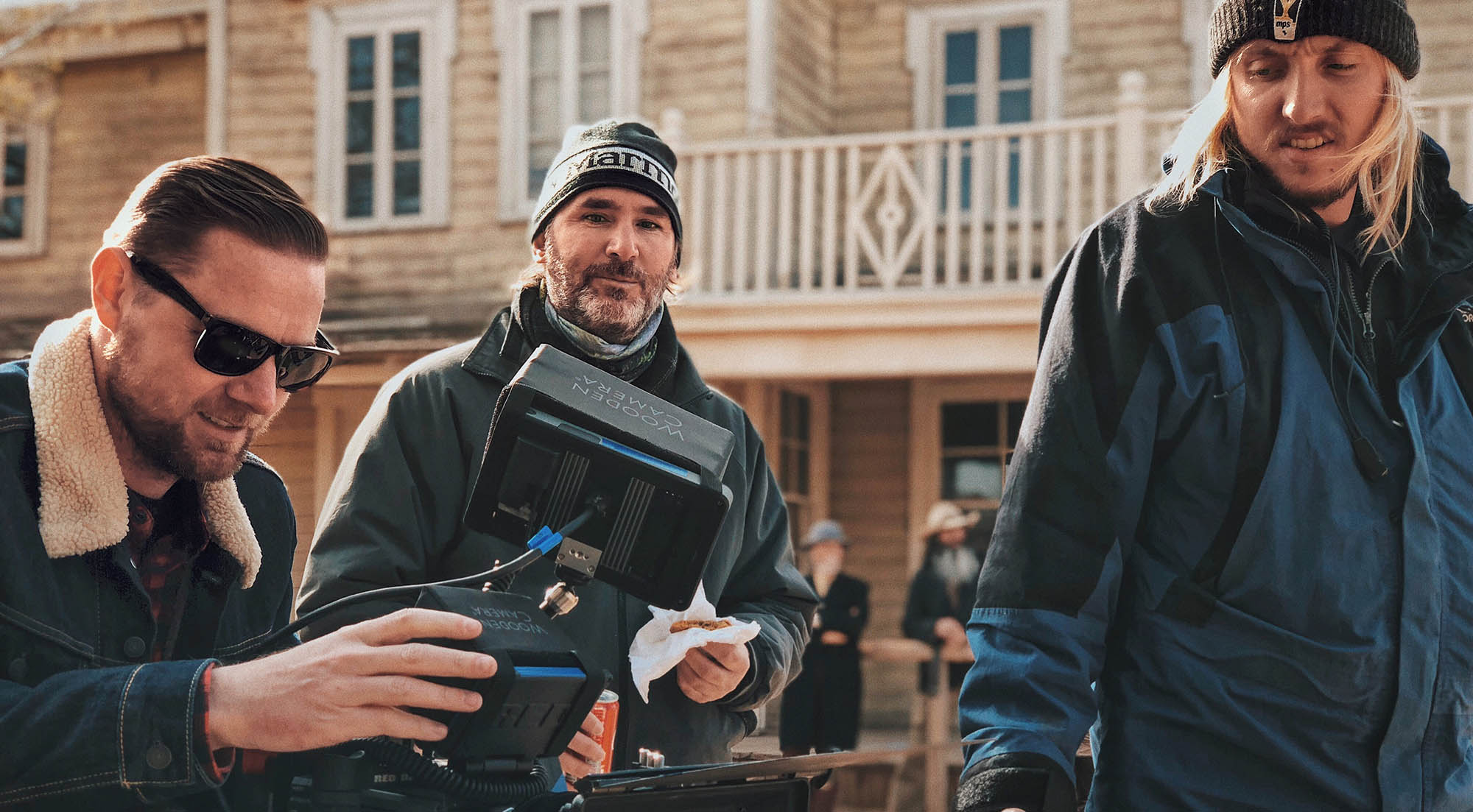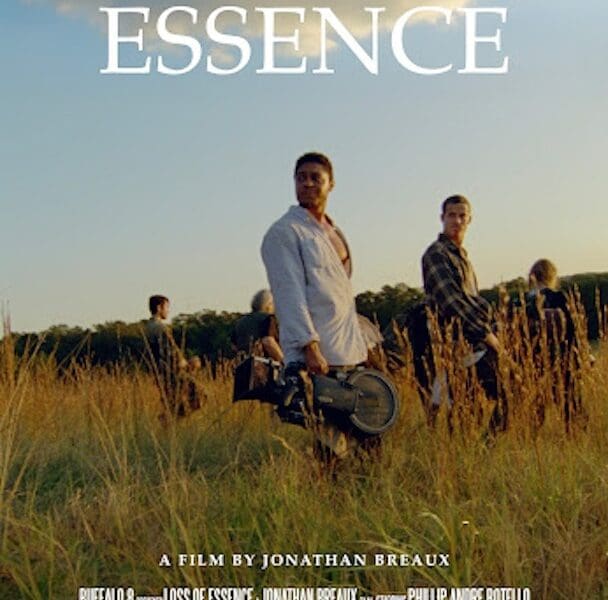
DIY indie film PR 101: Master the EPK
Writing a movie is hard, pitching a movie is hard, financing a movie is hard, and making a movie is hard. After you wrap your production, you might think all your hard work is over – but it ain’t. Get ready for the hardest part of all: marketing your movie.
Public relations, audience development, and social media marketing are tasks just as mystifying as filmmaking itself, which is why you’re lucky you have Film Daily on your side doling out free advice based on years in the trenches of the media marketing industry.
Most PR companies charge somewhere between $5000 – $25,000 to publicize your film. Follow our tips to do it yourself, and learn the secrets of building an audience for your work. Nobody said it’s gonna be easy, but with some marketing knowledge on your side you can promote your piece powerfully.
Over the next few days, we’ll be sharing our complete DIY indie film PR guide. Here’s the first lesson: how to make your own Electronic Press Kit.

What on earth is an Electronic Press Kit (EPK)?
An Electronic Press Kit (EPK) is a robust dossier, containing information about your film, which is distributed electronically to press, partners, PR, and bloggers. An EPK makes it easier for these parties to create content about your feature without conducting hours of research, helping you tell the story about your story while keeping you in control.
It amazes us here at FD when we receive slim EPKs with little to no relevant information and poor attention to detail. Never waste a chance to tell the story about your story. If the EPK is good, people will quote it verbatim; if it’s thorough, publications will request an interview (i.e. free publicity); and if it’s great, people will go to bat for you around town.
The EPK can be your best friend or your largest foe – prepare it well and use it wisely.

Jeez, sounds time consuming. How long is this thing going to take me? I already gave 6 years of my life to this movie . . . .
A good EPK can be built with a little help from your friends, apps, and outsourcing websites in around 72 hours. You have all the info you need already; it’s just a matter of collating it.
So what do you find in the usual EPK?
- Movie trailer
- Clips & stills
- Press release
- Film synopsis
- Director’s statement
- Cast/crew bios
- Online screener
- Contact lists

Movie trailer
It surprises us everyday how some indie directors create an amazing movie, but don’t bother to produce a trailer. I’m only going to say it once, so listen up:
A trailer is the most vital marketing tool you can have for any film.
Your trailer is make-or-break for your movie sales, reception, and next gig. Make sure you treat it with the respect it deserves. If you only do one thing on this list, create an amazing trailer!

Clips, stills, and candid shots
Candid shots
This one is easy, right? You probably had someone on crew who was wandering around with a Canon 7D in their spare time. Now go grab that person and plunder those personal archives. The press and the people want to see your juicy, salacious, borderline mundane behind-the-scenes shots.
Filmmaking is all about film magic, and the people want to see how you made that magic happen. Grab 10 to 15 of your juiciest candid shots explaining your journey on location, capturing the essence of your cast members off-screen, and speaking of the dynamic vibe on the shoot. Presto: you now have behind-the-scenes content, perfect for your press kit, and Snapchat & Instagram profiles.

Stills
Stills are just as important as candid shots. Again, you want to be looking at 10 to 15 – but really you want quality over quantity. Select your strongest shots that show:
- The art of the cinematography
- Your star power inhabiting their roles
- The costumes, the details, the makeup
- Your lighting & set design
- The narrative arc of your piece (without giving anything away)
Clips
Aim for three ultra-solid clips of no more than three minutes in length. The clips shouldn’t give away core plot points, but illustrate central themes along with the power of your actors, cinematography, and direction style.

Press Release
Writing a great press release is easier than you think. All you have to do is tell the story of your project in the 3rd person in 1000 words or less. We will be covering press releases in more detail later this week; in the meantime, always remember the Film Daily’s Good PR Golden Rules:
- Tell the story about your story. People want to know the backstory. They want to feel connected to your project, like they have gained some insider information.
- Use snappy headlines. Snappy headlines at the start of each paragraph draw your readers in. Double entendres, puns, and alliteration all work well. Remember: writers read hundreds of releases everyday. Write something that makes them giggle; grab their attention.
- Tell ‘em why your story is important. Tell your readers why they should engage with your movie. Tell them loudly; tell them clearly.
- Use visuals. You’re a filmmaker, so use your skills to sell your release. Animoto is a great marketing video platform you can use to create an accompanying video version of your project. Canva is a similar program you can use to make beautiful DIY graphics.
- Minimize hyperlinks. You want to keep your release focused; try to keep hyperlinks to a minimum. If you need to link to your writers, actors, producers, and studio, then build a bio page on your movie site and link to that instead. You want to send people to your movie site – not anywhere else.
- End with a call to action. The whole point of the press release is to encourage people to act: it could be to sign up for a screening event, or set up an interview. Whatever you want, make sure you ask for it – ideally more than once.

Film Synopsis
Chances are that you already have this thing kicking around somewhere from the development stage. Your producer probably forced you into writing it when you were shopping around for funding. Your synopsis should cover all the important elements of your tale: these are the ones that get you into Sundance or Cannes. The synopsis follows the story from start to finish in chronological order. Your synopsis is a sales tool – it needs to be enticing as well as informative.
FD’s Synopsis Golden Rules:
- Length: keep it neat and tidy for your EPK: no less than 1 page, no more than two.
- Style: Third person, present tense
- Characters: Make sure each of your major characters gets his/her own logline: a brief introduction of identity & motivation.
- Dialog: Pep up your synopsis with your most genius dialog lines. Sometimes the best person to tell your story are the characters inhabiting it.
- Subtext: Unlike screenplays, your synopsis can allude to your allusions. Give your readers a taste of the tropes, themes, and connotations they can expect in your movie.
- The big reveal: Feel free to reveal your ending and the lesson your characters learn from it.
- Think cinematically: Go big or go home. Make your synopsis sparkle, crackle, and pop. The more special the synopsis, the more likely your EPK recipients are going to review your movie.

Directors Statement
A director’s statement exists to help people understand your movie. It’s primarily used as a supplementary marketing ingredient – but no EPK will succeed without one.
In your statement you want to cover:
- The roots of your project
- Why this project is important to you/your crew/the audience
- Why you are qualified to tell this story
- Who you are inspired by and why
- Any relevant production/post-production realizations
- Your core hope for the audience’s response
Never assume your reader has any background information about you or your project. In this task, you must create a summation of your whole project from start to end. Be concise, be precise, and feel free to evoke imagery to help transport your readers to the universe your piece inhabits.

Cast/Crew Bio
This is simple. Assemble your core team’s bios and their relevant links (IMDb, website, headshots) and lay them out attractively. A great tool for doing this is Canva, a tool like an idiot’s guide to graphic design that helps mere mortals design beautifully laid-out work.
Online Screener
You need to make it as easy as possible for the press to view and review your movie. There are a few services to host your screeners, but we prefer Vimeo: it’s incredibly easy to share your copyright-protected movie using their service. (Before you send anything out, make sure you own the copyright!) Simply password-protect your screener before you share.
Make sure you include the link and your password in your EPK, or instructions on how to request a screener.

Press & partner lists
The penultimate, and highly important, task after creating your epic EPK is a coming up with a great list to contact, filled with influential people able to get the word out about your movie. We will be publishing a whole feature about growing your list later this week, but in the meantime here are a few tips:
- Your list doesn’t have to be large, but it should be high-quality. Often people panic that their existing list is too small, but in our experience most filmmakers have contacts in the industry they have forgotten about. Trawl your email accounts and social media profiles for industry contacts and start compiling a database.
- Join filmmaker social media groups and Meetups. The world over, passionate filmmakers, fans, producers, and press agents want to know about the newest cool project. Join online communities and grow your network. Attend Meetups, film festivals, and conferences and meet industry folks in real life. In social media groups, connect with people with whom you can build a symbiotic relationship. Don’t be shy about asking your new friends if you can send over your EPK; a lot of these folks will be delighted to hear about a new, cool, well produced project.
- Use newswire services. You can pay to distribute your press release to relevant press using keywords. We love Muck Rack, as it segments press via Twitter bios, which feels a little more relevant than some older competitors. This process can be pricey. Advisory HQ published this great guide to newswire services who will distribute your release for free.
- Reach out directly to bloggers & writers. Moz have a great tool called Followerwonk that lets you search Twitter via bio, i.e. DIY the process for which Muck Rack charges $500 a month. You can find, segment, follow, and contact relevant writers with a $10 Followerwonk subscription. By no means a quick fix, this method does have the added bonus that you personally engage and build a relationship with the writers you want to target, and you get to know who is writing what in the space that relates to your work.
- HARO is an amazing tool for writers and creators which allows you to reply to journalists looking for story sources. Sign up for their daily newsletter to make sure you never miss an opportunity to pitch your work for an article it would be perfect for.
- Go straight to the source: befriend your local journalists’ union. The less research a journalist has to do, the more time they can spend writing great features; while many journos say they get overwhelmed by unsolicited press releases, they’re generally happy to find one covering their beat. By making friends with the journalists’ union, you gain access to writers and create a relationship of synergy. It’s a soft way to be introduced to these writers, a respectful way to make career-lasting relationships.
Hit send and take a break, you’ll need it!
It’s wise to take a well deserved rest after releasing your new EPK into the wild. If you’ve done your job right, the rest of your week will be filled with calls and interview requests about your project.








